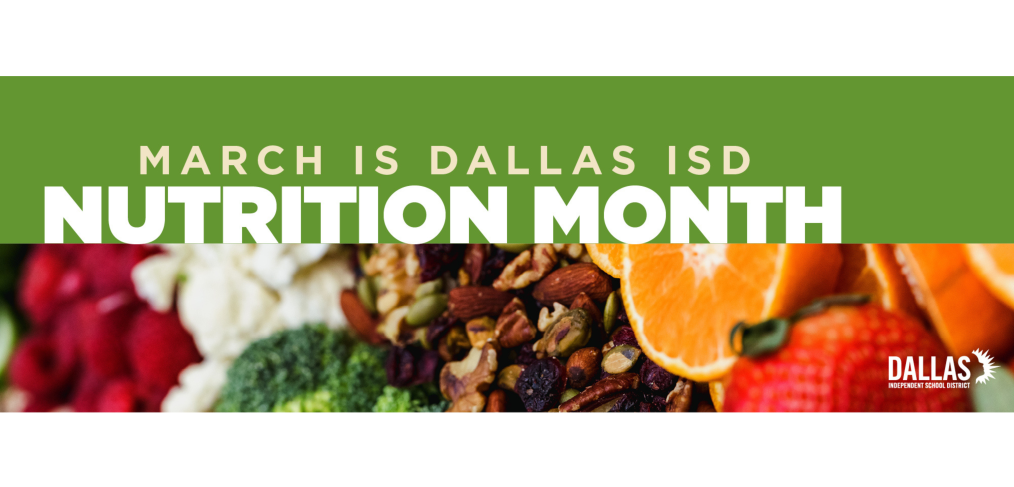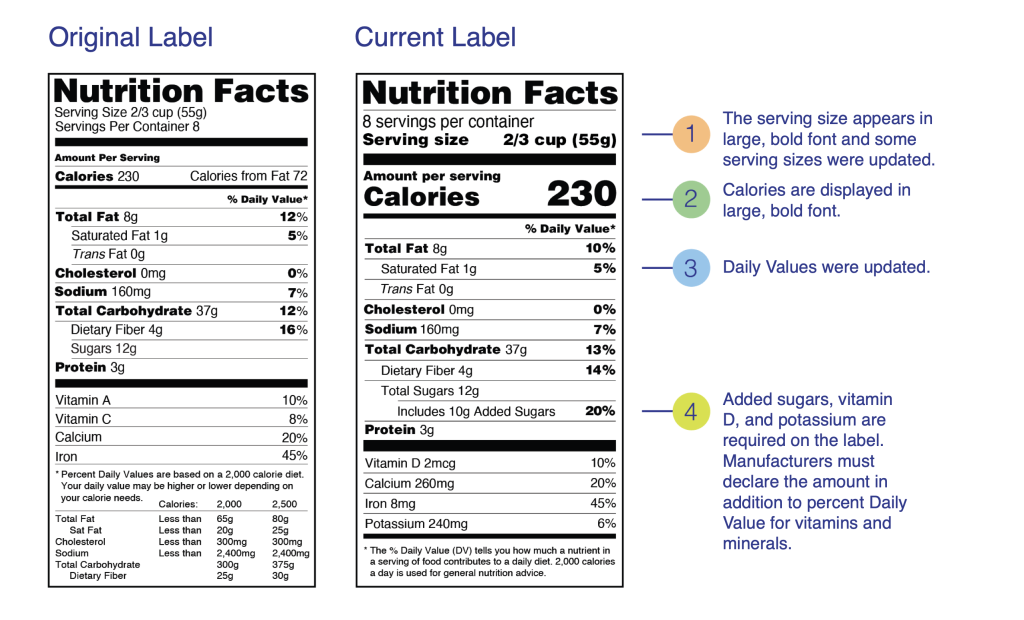
Nutrition Month: Reading the label
One of the basics of eating healthier is having a handle on what you are eating, and the best way to do it is learning how to read nutrition labels. The following is a quick guide to reading the Nutrition Facts label.
Step 1: Start with the serving size
Servings per container and serving size information appear in large, bold font. The serving size is not a recommendation of how much to eat.
- Look here for both the serving size (the amount people typically eat at one time) and the number of servings in the package.
- Compare your portion size (the amount you actually eat) to the serving size listed on the panel. The Nutrition Facts apply to the serving size, so if the serving size is one cup, and you eat two cups, you need to double the calories, fat and other nutrients.
- Learn more about serving sizes on the Nutrition Facts label.
Step 2: Compare the total calories to your individual needs
- Calories are in large and bold font to make the information easier to find and use.
- Find out how many calories are in a single serving and compare it to your total calorie allowance for the day—2,000 calories per day is used for general nutrition advice, but your individual needs may be higher or lower.
- Learn more about calories on the Nutrition Facts label.
Step 3: Let the percent daily values be a guide
- Use the percent daily values (DV) to help evaluate how a particular food fits into your daily meal plan because these apply to the entire day, not just one meal or snack.
- Daily values are average levels of nutrients based on a person who eats 2,000 calories a day. A food item with a 5% DV of fat provides 5% of the total fat that a person who needs 2,000 calories a day should eat.
- You may need more or fewer than 2,000 calories per day, which means you may need to adjust the percentage listed on the package for some nutrients.
- Low is 5% or less. Aim low in saturated fat, trans fat, cholesterol and sodium.
- High is 20% or more. Aim high in vitamins, minerals and dietary fiber.
Step 4: Check Out the Nutrition Terms
- Low calorie: 40 calories or less per serving.
- Low cholesterol: 20 milligrams or less of cholesterol and 2 grams or less of saturated fat per serving.
- Reduced: At least 25% less of the specified nutrient or calories than the usual product.
- Good source of: Provides at least 10% to 19% of the daily value of a particular vitamin or nutrient per serving.
- Excellent source of: Provides at least 20% of the daily value of a particular vitamin or nutrient per serving.
- Calorie-free: Less than five calories per serving.
- Fat-free/sugar-free: Less than ½ gram of fat or sugar per serving.
- Low sodium: 140 milligrams or less of sodium per serving.
- High in: Provides 20% or more of the daily value of a specific nutrient per serving.
Step 5: Choose low in saturated fat, added sugars and sodium
- Eating less saturated fat, added sugars and sodium may help reduce your risk for chronic disease.
- Saturated fat and trans fat are linked to an increased risk of heart disease.
- Eating too much added sugar increases your calorie count and makes it difficult to meet nutrient needs within calorie coals.
- High levels of sodium can add up to high blood pressure.
- Remember to aim for low percentages of daily values of these.
Step 6: Get Enough vitamins, minerals and dietary fiber
- Choose more foods containing dietary fiber, potassium, vitamin D, calcium and iron to maintain good health and help reduce your risk of certain health problems such as osteoporosis and anemia.
- Choose more fruits and vegetables to get more of these nutrients.
- Remember to aim high for the percentage daily values of these nutrients on other foods.
Step 7: Consider the additional nutrients
You know about calories, but it is also important to know about the additional nutrients on the Nutrition Facts label.
- Protein: A percentage daily value for protein is not required on the label. Eat moderate portions of lean meat, poultry, fish, eggs, low-fat milk, yogurt and cheese, plus beans and peas, nuts, seeds and soy products.
- Carbohydrates: There are three types of carbohydrates: sugars, starches and fiber. Eat whole-grain breads, cereals, rice and pasta plus fruits and vegetables.
- Sugars: Simple carbohydrates, or sugars, occur naturally in foods such as fruit (fructose) and milk (lactose) or come from refined sources such as table sugar (sucrose) or corn syrup. Added sugars are included on the updated Nutrition Facts label. The 2020-2025 Dietary Guidelines for Americans recommends that foods and beverages with added sugars be avoided by children under the age of 2 and that individuals older than 2 years of age consume no more than 10% of daily calories from added sugars.
 Foods with more than one ingredient must have an ingredient list on the label. Ingredients are listed in descending order by weight. Those in the largest amounts are listed first. This information is particularly helpful for people with food sensitivities or allergies, those who need to avoid certain ingredients due to religious reasons, or people who prefer a vegetarian eating style.
Foods with more than one ingredient must have an ingredient list on the label. Ingredients are listed in descending order by weight. Those in the largest amounts are listed first. This information is particularly helpful for people with food sensitivities or allergies, those who need to avoid certain ingredients due to religious reasons, or people who prefer a vegetarian eating style.
Learn more about the Nutrition Facts Label by visiting the FDA website.
Source: EatRight.org



